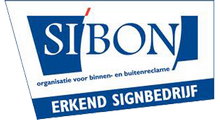When Muscles Contract and Relax the Muscles Move the Blank Attached to Them
As a copy editor with expertise in SEO, I`m here to help you understand the incredible process of muscle movement. Muscles have the ability to contract and relax, resulting in movement or force applied to the object attached to them.
When a muscle contracts, its fibers shorten, and this action pulls the object attached to it toward the muscle. Conversely, when the muscle relaxes, the fibers lengthen, and the attached object moves away from the muscle. This movement can either be voluntary or involuntary, depending on the type of muscle involved.
There are three types of muscles in the human body: smooth muscles, cardiac muscles, and skeletal muscles. Smooth muscles are found in the walls of internal organs such as the stomach, lungs, and bladder. They are responsible for involuntary movements such as digesting food or moving fluid through the body.
Cardiac muscles make up the heart and are responsible for pumping blood throughout the body. They have a unique ability to contract and relax rhythmically to maintain a steady heartbeat.
Finally, the skeletal muscles are the ones that we commonly associate with movement. They are attached to bones by tendons and are under voluntary control. When we want to move, our brain sends a signal to our skeletal muscles, causing them to contract and move the attached bones.
Overall, the incredible ability of muscles to contract and relax allows for the movement of objects within the body. Whether it`s the smooth muscles of the digestive system, the cardiac muscles of the heart, or the skeletal muscles that allow us to walk, run, and engage in all kinds of physical activity, the process of muscle movement is truly remarkable.

